Have you ever wondered about the stories your beloved pet could tell if they could talk? What if they could share the secrets of their breed, unique attributes, and the exciting tales woven into their lineage? Today, we will uncover some fascinating aspects of the most loved and adored dog breeds: the Cavalier King Charles Spaniel. With their expressive eyes, endearing personality, and regal bearing, these dogs hold a special place in the hearts of many. From their royal lineage to their versatile talents, butterfly-like ears, and social nature, here are ten things you probably need to learn about Cavalier King Charles Spaniels.
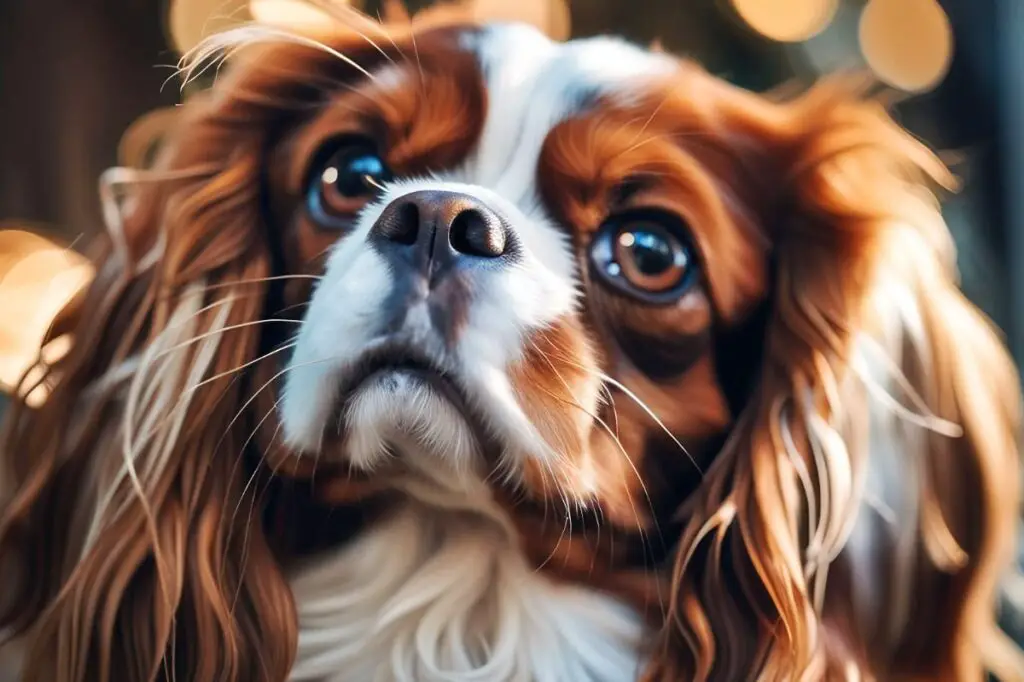
Table of Contents
- 1 Royal Lineage
- 2 Versatile Talents
- 3 Butterfly-like Ears
- 4 Eyes Speak Volumes
- 5 Shedding Seasons
- 6 Four Recognized Colors
- 7 Health Issues
- 8 Their Love for Water
- 9 Lap Dogs
- 10 Social Butterflies
- 11 Related posts:
- 12 From Regal to Playful: Understanding the Versatile Cavalier King Charles Spaniel Temperament
- 13 Cavalier King Charles Spaniel Puppies (19 cute pups)
- 14 Can Cavalier King Charles Spaniels Swim? Discover Their Love for Water!
- 15 Cavalier King Charles Spaniel (18 Cute Cavies)
Royal Lineage
Did you know that the Cavalier King Charles Spaniel is not just a breed but one of royal lineage? This breed’s history traces back to the United Kingdom, where they were preferred companions. The breed is named after King Charles II, who was rarely seen without two spaniels at his heels. He loved these dogs so much that he decreed they allowed in public places, including the Houses of Parliament!
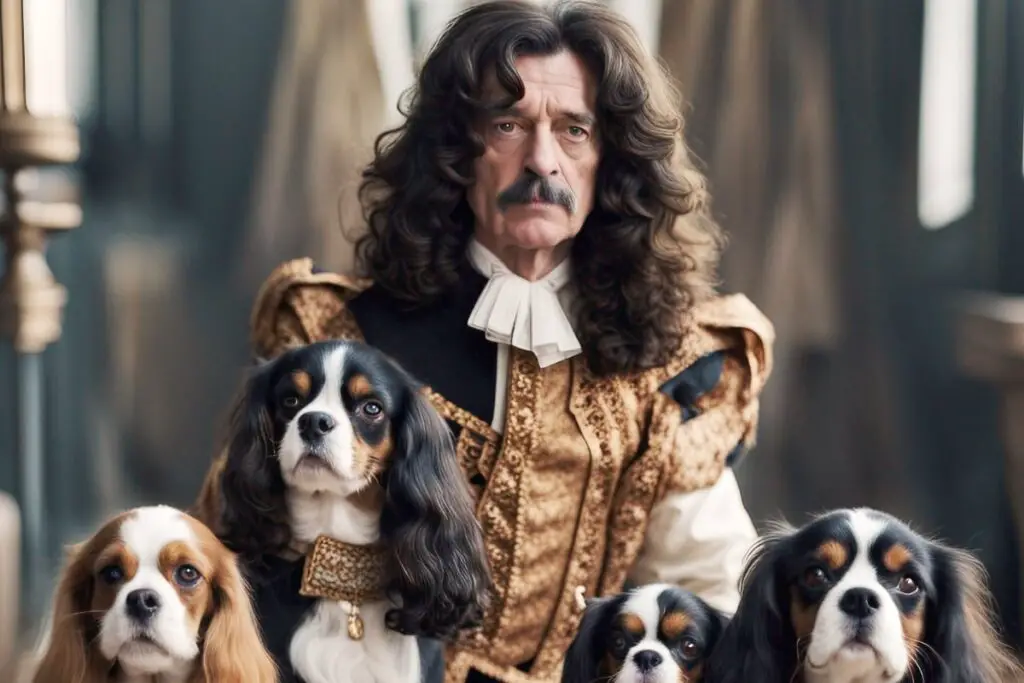
Versatile Talents
These adorable canines are not just beautiful and royal but pretty talented. Their intelligence and eagerness to please make them excel in dog sports, including obedience, rallying, and agility. While they love to sit on laps, they enjoy running through obstacle courses. Cavaliers are also known for their therapeutic nature. They make excellent therapy and emotional support animals due to their calm demeanor, and they are often seen visiting hospitals and nursing homes, bringing joy to those who need it most.
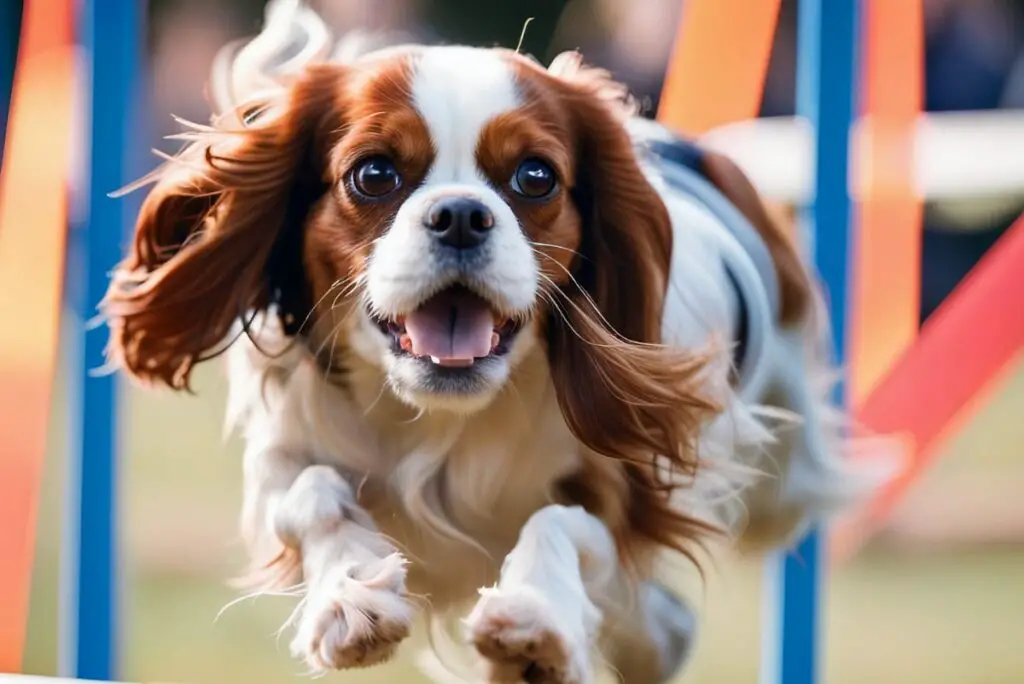
Butterfly-like Ears
Have you ever noticed the Cavalier King Charles Spaniel’s unique, feathered ears? Their long, silky ears are reminiscent of a butterfly’s wings – hence the term “butterfly ears.” This feature, along with their expressive puppy-dog eyes, gives them a charming and distinctive look that is hard to resist. Their ears require regular brushing to prevent tangling and matting, adding to their grooming needs but contributing to their regal appearance.

Eyes Speak Volumes
One of the Cavalier King Charles Spaniel’s fascinating features is its large, round eyes that speak volumes. Known to express a range of emotions, from joy and excitement to empathy and understanding, their eyes are a window to their soul. This expressiveness makes them such excellent companions – they can often seem to understand how their human feels. Just one look into those eyes, and it’s easy to see why so many people fall in love with this breed.
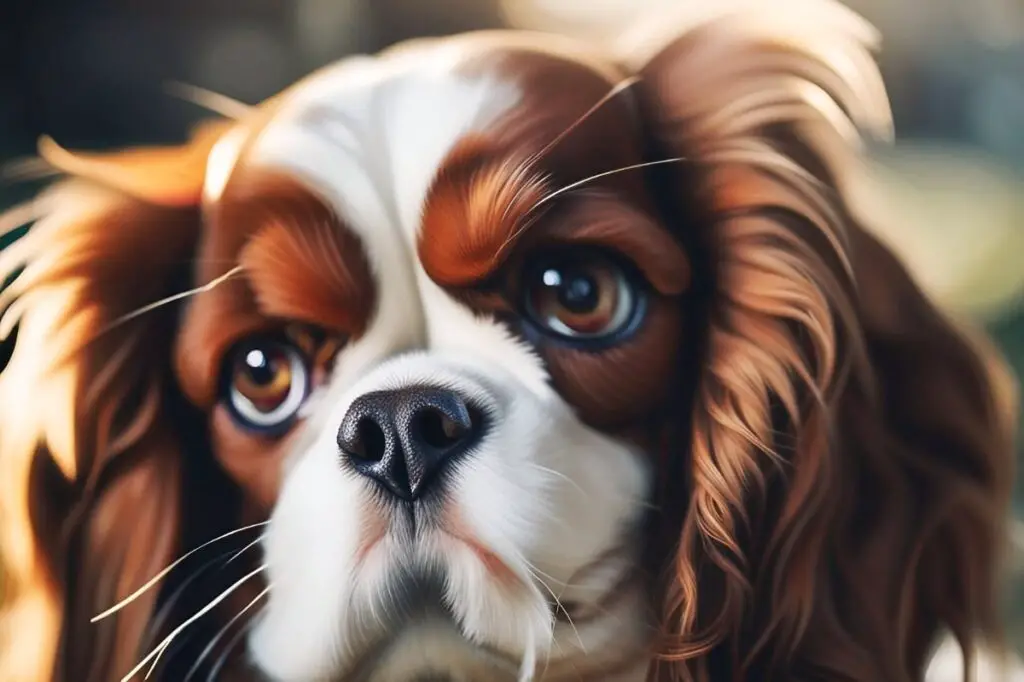
Shedding Seasons
Cavalier King Charles Spaniels are known for their silky, lush coats, but with such beauty comes the reality of shedding. Although Cavaliers are not heavy shedders like some breeds, but they go through two main shedding seasons – spring and fall. You can expect an uptick in hair around your home during these times.
Regular brushing is essential to manage shedding and keep their coat pristine. Brushing removes dead hair and helps distribute natural oils, which keeps their skin and coat healthy. A slicker brush or a comb with wide and narrow teeth can work well for this breed.

Bathing your Cavalier once a month or so can also help manage shedding. However, it’s important not to overdo it, as excessive bathing can strip the natural oils from their skin, leading to dryness and irritation. Remember, when it comes to Cavaliers, a healthy coat is about balance – the right amount of brushing, bathing, and proper diet.
Four Recognized Colors
Cavalier King Charles Spaniels come in four recognized color patterns, each adding a unique charm to their appearance. These colors include:
- Blenheim: This color pattern has a pearly white base with chestnut markings. The distinctive feature of the Blenheim is the “Blenheim Spot” or “Kissing Spot,” a chestnut mark found on the center of their head.
- Tricolor: Tricolor Cavaliers have a coat that’s black and white with tan markings, usually found on their eyebrows, inside the ears, under the tail, and on the cheeks
- Black & Tan: As the name implies, these Cavaliers sport black bodies with tan markings on the eyebrows, cheeks, inside the ears, under the tail, and on the chest.
- Ruby: Ruby Cavaliers are entirely chestnut with no white or black markings. The color is a rich, warm hue that adds to the breed’s overall cuteness.
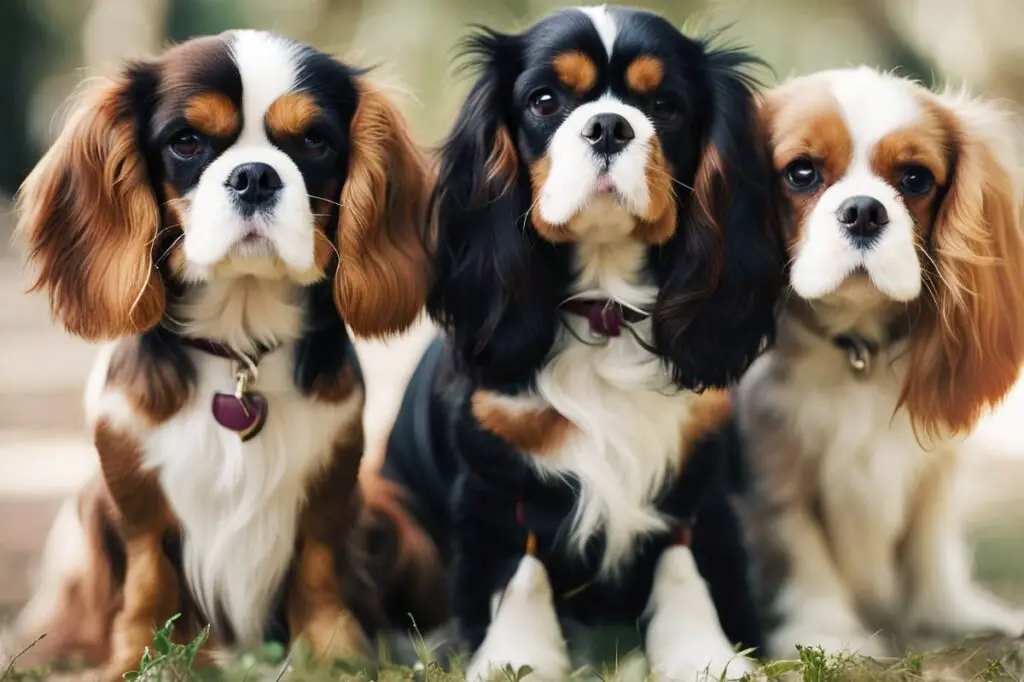
Each color pattern has its unique appeal, but Cavaliers are always adorable and lovable regardless of the color.
Health Issues
Although Cavalier King Charles Spaniels are generally healthy dogs, they are predisposed to certain breed-specific health conditions. The two most common are Mitral Valve Disease (MVD), a heart condition, and Syringomyelia (SM), a neurological disorder. Other potential health issues include hip dysplasia, eye disorders, and certain ear infections.
Regular veterinary check-ups are critical for early detection and treatment of these conditions. Additionally, if you’re considering getting a Cavalier, choosing a responsible breeder who tests their breeding dogs for these conditions is vital. A good breeder can provide proof of health clearances for both puppy parents.

Knowing these potential health issues can help ensure your Cavalier leads a happy, healthy, and comfortable life. Regular exercise, a balanced diet, and plenty of love and attention are also essential for the overall well-being of your furry friend.
Their Love for Water
Cavalier King Charles Spaniels, being a sporting breed, often have an affinity for water and swimming. Whether it’s a dip in a backyard pool, a trip to the beach, or a playful splash in a lake, many Cavaliers genuinely enjoy these watery activities. Their compact size and typically robust health make them great swimmers who can easily navigate the water.
However, as is true with all breeds, not all Cavaliers may share this love for water. Some may be apprehensive about entering the water or prefer to stay dry. Never force a dog into water if uncomfortable, as this can lead to fear and anxiety. If your Cavalier does enjoy swimming, always ensure their safety by supervising them around water and using a doggy life jacket if needed.
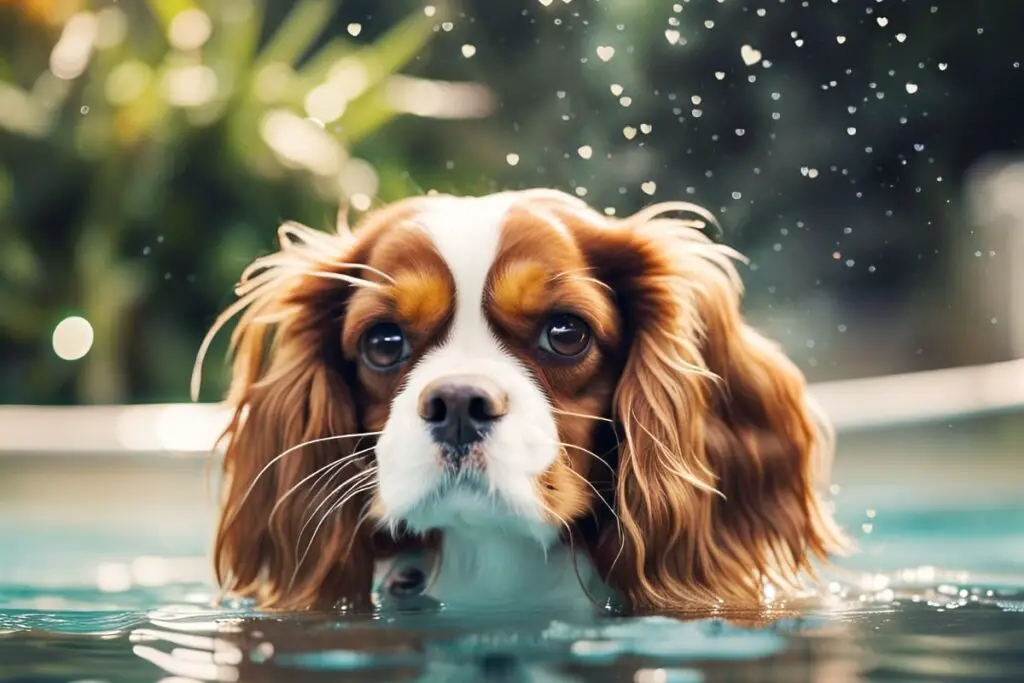
Lap Dogs
Cavaliers may love their playtime, but they are lapdogs. They crave human companionship. With their size, they are ideally suited to curl up on your lap for a nap or petting session. This trait makes them an excellent companion for those who enjoy quiet evenings at home or need a warm, loving buddy.
Their adaptability to various living environments is another plus. Whether it’s a spacious house in the suburbs or a compact apartment in the city, they will be content as long as they get their daily exercise and plenty of love. This makes them a popular choice among urban dwellers and seniors.

Social Butterflies
Cavalier King Charles Spaniels are renowned social butterflies. They’re friendly with almost everyone they meet – humans, other dogs, and even cats. Cavaliers enjoy playing with other dogs and often do well in multi-pet households.
Their gentle and affable temperament makes them a perfect fit for families, including those with children. They generally enjoy being part of family activities, whether a game in the backyard, a walk in the park, or a cozy movie night.
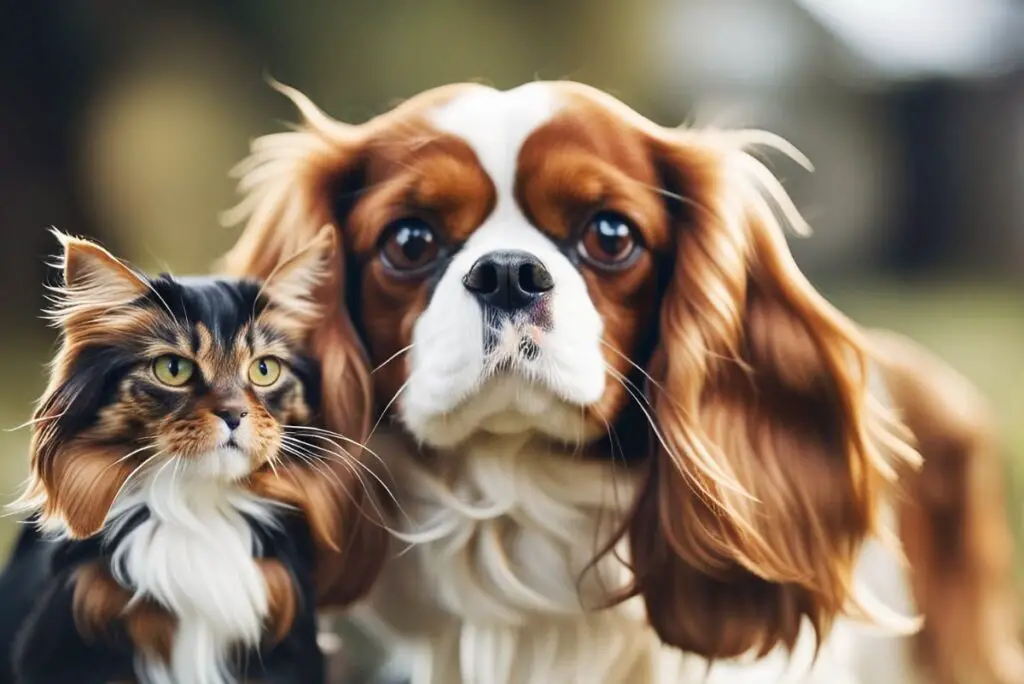
While they can be too friendly for guard dog duties, their sociability contributes to their charm. However, their friendly nature also means they may suffer from separation anxiety if left alone for long periods. Cavaliers thrive in environments where they can interact and be with their loved ones as much as possible.
Cavalier King Charles Spaniels are remarkable creatures, possessing a unique blend of charisma, charm, and regality. Their multifaceted personalities, rich history, and diverse skills make them a breed like no other. Whether you’re mesmerized by their butterfly-like ears, moved by the expressiveness in their eyes, intrigued by their royal lineage, or comforted by their sociability, one thing is clear: Cavalier King Charles Spaniels are much more than just lap dogs—they are companions for life, ready to fill your home with love, joy, and a touch of royal charm. Whether you already have a Cavalier King Charles Spaniel in your life or considering welcoming one into your home, understanding and appreciating these unique aspects of their breed can only enhance the bond you share with your four-legged friend.